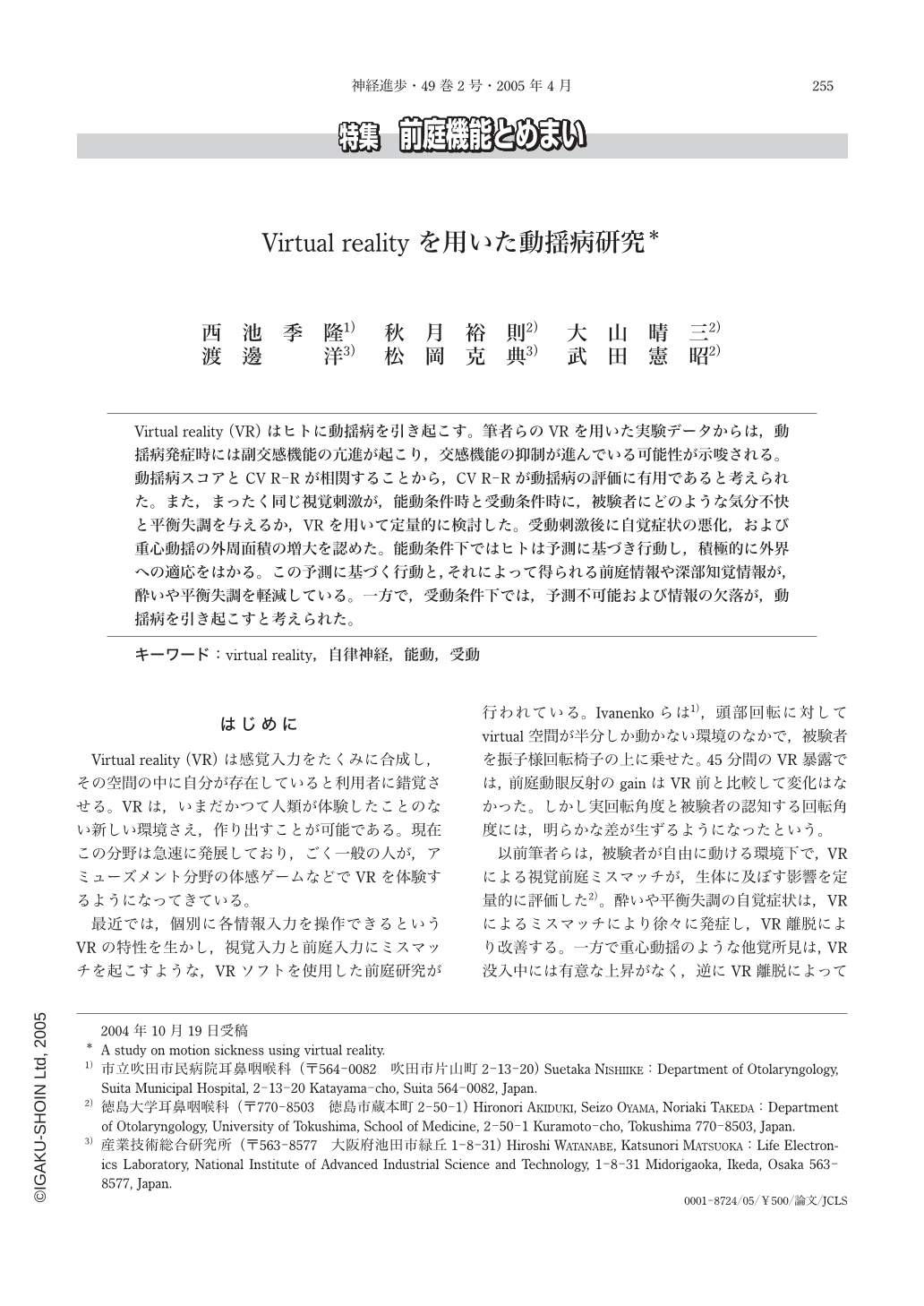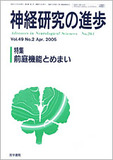Japanese
English
- 有料閲覧
- Abstract 文献概要
- 1ページ目 Look Inside
Virtual reality(VR)はヒトに動揺病を引き起こす。筆者らのVRを用いた実験データからは,動揺病発症時には副交感機能の亢進が起こり,交感機能の抑制が進んでいる可能性が示唆される。動揺病スコアとCV R-Rが相関することから,CV R-Rが動揺病の評価に有用であると考えられた。また,まったく同じ視覚刺激が,能動条件時と受動条件時に,被験者にどのような気分不快と平衡失調を与えるか,VRを用いて定量的に検討した。受動刺激後に自覚症状の悪化,および重心動揺の外周面積の増大を認めた。能動条件下ではヒトは予測に基づき行動し,積極的に外界への適応をはかる。この予測に基づく行動と,それによって得られる前庭情報や深部知覚情報が,酔いや平衡失調を軽減している。一方で,受動条件下では,予測不可能および情報の欠落が,動揺病を引き起こすと考えられた。
Virtual reality caused motion sickness in humans. Our findings suggested that increase of parasympathetic functions and decrease of sympathetic functions during motion sickness. Since subjective symptoms correlated to CVR-R, it may be useful to evaluation of motion sickness.
The effect of the same visual stimulation during active conditions and passive conditions, respectively, on subject's subjective and objective symptoms was examined using VR. The subjective symptoms were worsened and postural instability occurred during passive conditions. Under active conditions, subject acts on the basis of prediction and aim to adapt to the external world positively. The action based on this prediction, vestibular information and proprioceptive information may reduce motion sickness during active conditions. Passvie conditions without the prediction as well as nescessary informations may induce motion sickness.

Copyright © 2005, Igaku-Shoin Ltd. All rights reserved.


